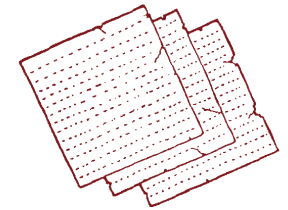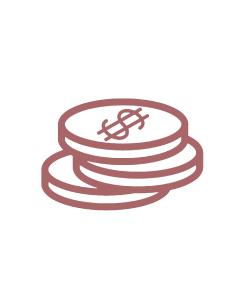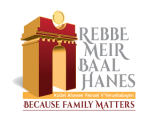Home » Kimcha Depischa

By joining in the mitzvah of tzedaka for kimcha depischa, you can celebrate a truly joyous holiday season.
Taste the Freedom in the Air
Help struggling families feel the Pesach freedom too.
sponsor
2 boxes $196
half pallet
6 Boxes $588
pallet
12 boxes $1,176
6 pallets
72 boxes $7,056
truckload
168 boxes $16,464
full trailer
456 boxes $44,688
Preparing for the Pesach Season
The spring season heralds the coming of Pesach — the Passover holiday. This holiday is also referred to as the “Holiday of Freedom”, as it celebrates the Jewish nation’s release from 210 years of slavery in Egypt through a series of miraculous events. This week-long holiday is rife with a sense of renewal and freedom, Passover-specific customs, traditional foods, and a focus on forming a meaningful connection with G-d through the acceptance of the Torah that followed the redemption.
Pesach Prep and Planning
As soon as the cellophane gift wrap from the Purim baskets have been discarded, it’s time to draw up a cleaning schedule. Housewives start the massive project of removing every trace of chametz (leavened food) from their homes. Leavened food is prohibited to be eaten, owned or enjoyed in any other way (as in the form of fragrance, etc.) throughout the holiday of Pesach. This includes all bread, pasta, as well as many other food items which contain even just a miniscule amount of chametz (such as some liquors).

Removing the leaven is a reminder of how Hashem took us out of Egypt so quickly that the Jews didn’t even have time to allow the dough for their bread to rise and become leaven. Instead, they followed Moshe Rabbeinu out of Egypt as soon as they were commanded to do so, and allowed their raw dough to bake in the sun en-route. This is related to the reason we don’t use leavened products on Pesach.
There’s a satisfaction and pleasure that comes as a result cleaning the nooks and crannies of one’s home. The sparkling surfaces and aired-out closets bring a feeling of earned renewal and freshness.
The kitchen is treated to an extra dose of attention in order for it to become a ready-for-Pesach cooking station. The first step is getting it spotlessly clean. Then it’s time to kosher the kitchen, a process which makes it halachically kosher for Passover use. Next, every surface is carefully covered, often with aluminum foil. It’s a sight to see the granite and wood transformed to a silver wonderland.
But there’s no rest for the weary just yet- now it’s time to do the Pesach shopping and cooking.
Pesach Shopping Lists and Menus
Preparing meals for an eight-day holiday is quite an undertaking, especially since this is a time when many families like to have guests, or big family meals. It takes some reckoning to figure out just what do I need for a Seder meal hosting eight guests in my house. Writing a shopping list for your seder meal supplies and holiday menus is very helpful.
Starting your Seder and Passover meal prep early is helpful, since there are many holiday meals to cook! With limited ingredients, creating your Passover vegetable dishes and Passover dishes chicken takes just a bit more originality. Add that creativity to your ubiquitous potato side dishes for Passover to take you beyond the classics.
Matzah
High on your list should be the star of the Pesach holiday- matzah! It’s a mitzvah to eat matzah at the Seder specifically, as a reminder of the slavery that the Jews endured in Egypt. Matzah is called “poor man’s bread,” because it is made of dough that hasn’t been allowed to rise and become leaven, or chametz.

It also reminds us of how Hashem took the Jews out of Egypt so quickly- they didn’t even have time to allow the dough for their bread to rise! Instead, they baked the dough on their shoulders into matzos, which they ate as they traveled into the desert.
In smaller Jewish communities, where to buy matzah for Passover may mean having it shipped from another state or country. Those of us with more kosher amenities nearby, can buy matzah at a local supermarket. As long as the wrapped matzahs have a Kosher for Passover symbol, and a stamp of approval from a kosher supervision agency, they are kosher for your Seder table. Some are careful to buy only Shmura matzah, where the flour was watched extra stringently to ensure it did not come in contact with water, which can potentially allow the dough to become leavened — therefore be rendered invalid for Pesach consumption.
Wine
Then, there’s the wine. At the Seder, every participant is supposed to drink 4 cups of wine or grape juice, as a reference to the four phrases of redemption mentioned in the Torah. Hashem said: “I will take you out of Egypt, I will save you, I will redeem you, and I will take you as my nation.” (Sh’mos 6:6-7) These four phrases also refer to the four exiles that the Jewish nation endured and were or will be redeemed from: the Egyptian, Babylonian, and Greek exiles, as well as the current one we are in.

The fifth expression of redemption that is mentioned, “V’heiveisi-and I will bring you to the Land”, refers to the Ultimate Redemption, the Messianic Era that will put an end to all exiles. So long as we are still anticipating this final redemption, we don’t drink a cup of wine for this verse. However, we do pour this fifth cup, and we leave it in the middle of the table.
This cup is called the Cup of Elijah, because Elijah the Prophet will one day answer all the open questions in the Talmud when Mashiach (the Messiah) arrives. Our tradition states that Elijah visits every Jewish home on Seder night, and takes a sip of the cup of wine that we pour for him. One day, (hopefully very soon!) when we are worthy of the final redemption, Elijah will come and tell us the happy news that we are about to be redeemed.
If you have a big family or are hosting a lot of guests, you might need to buy cases of wine for Pesach to cover all those cups! You can look at a kosher for Passover wine list as you choose your wines. Lower alcohol content may make it easier to stay up through the seder after drinking your four cups of wine for Passover. Another idea to keep in mind is that red wine is considered preferable at the Seder.
Beyond the Cleaning and Cooking
As you do your kosher for Passover shopping, buying meat, wine and Seder goods, you’re likely keeping an eye out for class and style. Now is the time for the best and the finest, to make it a truly zissen Pesach — a sweet Pesach.
When we sit at the Seder table, reliving our redemption, we want to feel like royalty. We recline like kings and dip our foods as symbols of the freedom we’ve been given with the Exodus. To add to that feeling of luxury, it’s appropriate to use silver and crystal dishes, wear our best clothing and use beautifully embroidered matzah covers.
All of the opulence gives us that feeling of expansiveness and freedom, which is the mood of the season. But there’s more to having a joyous and meaningful Pesach than buying sumptuous goods. The true luxury of Pesach is making sure that everyone can experience the happiness and freedom of the holiday, celebrated in comfort and good spirits. Families that struggle to meet basic living expenses have a hard time experiencing the renewal of Pesach, because of the extra holiday expenses. Buying matzah, wine, and new clothing for the holiday make this time of year stressful. Kosher for Passover meals are cost-prohibitive for families living from hand-to-mouth, but none of these items are something that poor families can do without when it comes to the holiday.
Achieving royalty on Pesach means helping these families taste the freedom too. By providing for others who would not be able to comfortably purchase the basic items, we can share that joy by alleviating the financial burden and sharing our good fortune with those less fortunate than us.
The Meaning of Kimcha D’Pischa
When Pesach season rolls around, Jews around the globe rally to fill the need of the families who find it difficult to purchase matzah, wine, and other Pesach essentials. The weeks leading up to Pesach are prime time for the mitzvah of tzedaka. And that’s where kimcha depischa comes in.

Kimcha depischa is an ancient Jewish tradition of giving charity before Passover, so that everyone can have a chag Pesach sameach- a happy holiday. The literal meaning of the term is “flour for Pesach,” because in the days of old, it was difficult to buy kosher for Passover flour on the holiday itself. Families had to stock up in advance of the holiday, which was difficult for the poverty-stricken population that lived hand-to-mouth.
While families today may not need literal flour for Pesach, food distribution from Jewish tzedaka organizations enables them to prepare for Pesach with joy, accomplishing the same thing as the kosher for Passover flour distribution used to. Throughout the generations, Pesach has remained a time of unprecedented expense, and a time of unprecedented Jewish charity.
All over the world today, Jewish tzedakah organizations collect funds for kimcha depischa so that they can distribute Passover gifts, food, and supplies to needy families that desperately need the help. Some will arrange a Passover seder meal delivery to families that cannot come to central distribution centers. Others will deposit cash directly to people’s overdue accounts at the grocery stores.
Especially in Israel, where there are so many poor families who can’t afford Passover expenses, food packages mean support and happiness for the indigent. Jewish charities in Israel are extremely busy before Pesach, making sure that every family receives as much help as it needs so they can have a dignified and joyous chag.
Sneak Peak into a Pesach Food Distribution
by Rebbe Meir Baal Haness Tzedakah
At this point, the food distribution is orchestrated by the efforts of over 150 volunteers, who give of their time to pack the boxes to be distributed. Putting together a distribution on this scale requires a total of several hundred hours of time! But the volunteers aren’t daunted by the massive task, knowing that the rewards of their labors are inestimable.
Into those boxes go 240,000 eggs, 80,000 kilos of potatoes, and 16,000 liters of wine and oil. These fabulously large numbers give an idea of what this means to the people who receive the food- all the basics needed for their Yom Tov meals are there in their boxes.
Large families receive 8 boxes, so that they have enough food to last them through the 8 days of Pesach. With lots of mouths to feed, this relieves much stress and financial burden, making it a chag Pesach sameach for children from struggling families. Over 14,000 children had food to eat for Pesach last year thanks to this food distribution.
The scene at the food distribution is one of controlled mayhem, where families come to pick up the boxes that will sustain them through Pesach. A long row of cars drives up, each vehicle stopping at the stations where volunteers load the boxes into their trunk. Each box contains wine, matza or eggs, and slowly each car fills up with all the basics.
Children whoop with joy as their car moves forward, adding another box at each stop. The cars keep coming, empty and waiting, and each one leaves loaded with essential goods. Excited families bring their boxes home, and the people at Rabbi Meir Baal Haness know that they’ve helped bring happiness to their life.
You can be a part of this too! Donations like yours enable this distribution to happen. Bring some light into the world with a donation to the holiday fund.

Numbers that
Speak for
Themselves
square footage used
trucks transported food
volunteers packed and distributed boxes
hours of preparation time spent
increase in number of families helped
increase in number of families helped
liters of wine & oil distributed
dozen eggs distribute




You’ve cleaned to perfection, felt that rush of satisfaction as the boiling water rendered your kitchen kosher for Passover, and spent hours creating a delicious menu from limited ingredients. Now you’re finally setting your table for the grand event, the Seder night.
Sitting down at the Seder, set with crystal goblets and glinting wine decanters, crunchy matzo peeking out from under the Seder plate, there’s a sense of having reached the climax. After so much effort and preparation, you’ve arrived at the high point of the holiday.
At the Seder, you’ll be celebrating the redemption from Exodus to the fullest. It’s the time when we recite the Haggadah, telling the story of the Jewish nation’s salvation. We discuss the slavery in Egypt and how Hashem took us out of there, with endless wonderful miracles. In the Haggadah, we thank Hashem for all those miracles, including the Ten Plagues and the Splitting of the Sea.
As you begin your recitation of the Haggadah, though, you’ll notice that before we start the story, the first thing we do is extend a seder meal invitation to all the needy and poor! We say, “Anyone who is hungry, come and eat, anyone who is needy, come and celebrate the Pesach seder.”
What’s the point of inviting the poor now, as the Seder is about to begin? It’s highly unlikely that anyone will actually take us up on the invitation right then. There’s another reason we say this at the beginning of the seder.
This invitation expresses a deep Jewish truth- that serving Hashem and having a relationship with Him is dependent on caring about other people. Before we can begin the exalted service of the Seder, we need to make it clear that we are thinking about others as well. It’s not only about our Seder.
In the weeks leading up to the seder, we’ll want to make sure that we’ve fulfilled this idea fully. Donate to Jewish charities with a holiday fund, so that you’ll know you’ve helped Jewish charity organizations provide for poor families on Pesach. Having shown that your Judaism includes caring about others, you can now enjoy the spiritual high of the Seder in full.
It’s a wonderful feeling to know that you’ve had a part in setting up not just your own Seder night, but countless Sedarim for poor families. They will also be able to sit down to the Seder with a light and happy heart, knowing that they can feed their families easily this Pesach. With just one donation to a holiday fund, you’ll get the merit of bringing joy to hundreds of people as Pesach rolls around. Call it the advantages of helping the poor.


 We can light a candle on your behalf at Rebbe Meir's Holy Tomb.
We can light a candle on your behalf at Rebbe Meir's Holy Tomb. 